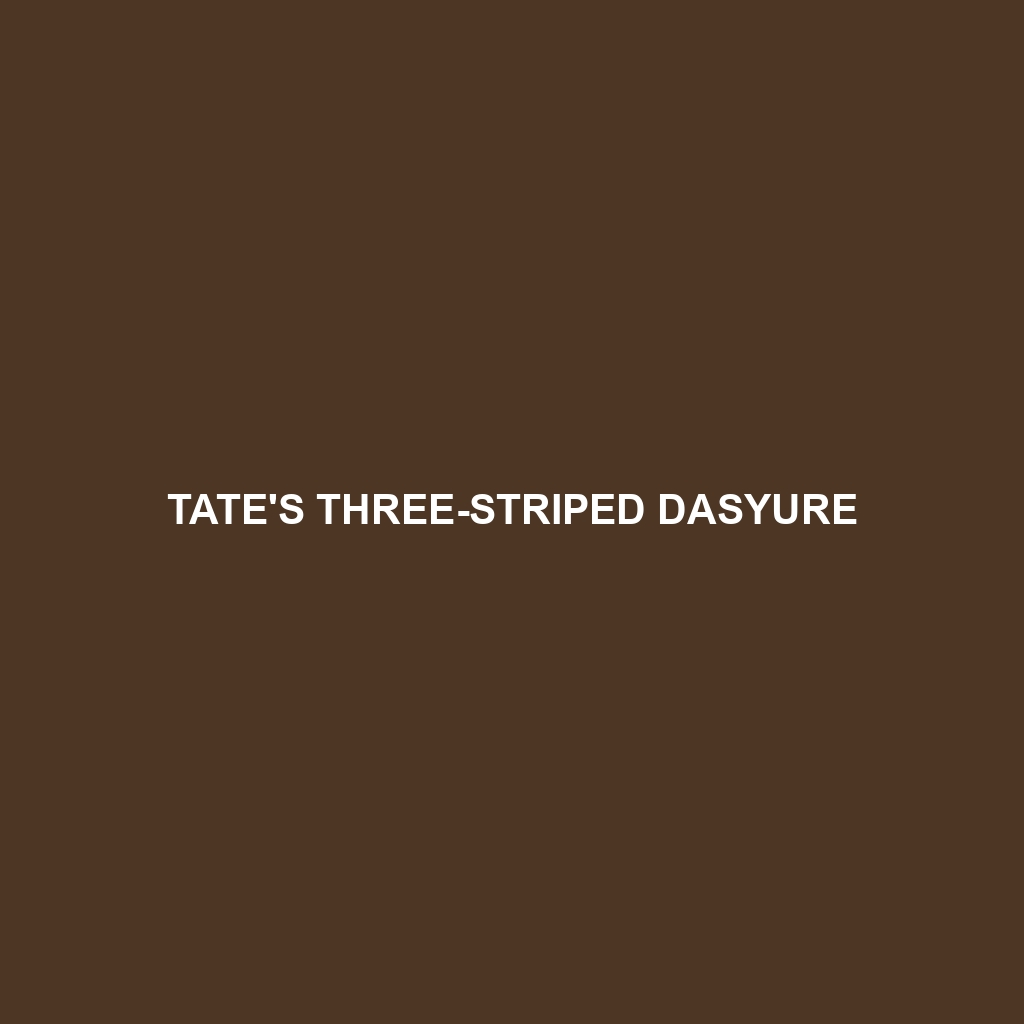Tate’s Three-striped Dasyure: An In-depth Look
Tate’s Three-striped Dasyure (Myoictis leucura), also known as the White-tailed Dasyure, is a small carnivorous marsupial native to New Guinea. With its striking three-striped pattern and distinctive white-tipped tail, this elusive creature is a fascinating example of the diverse wildlife found in the Australasian region.
Physical Characteristics
Size: Tate’s Three-striped Dasyure measures approximately 20-25 cm (8-10 inches) in body length, with an additional tail length of 15-20 cm (6-8 inches). They typically weigh between 250-400 grams (8.8-14.1 ounces).
Coloration: The fur is primarily a reddish-brown with three prominent dark brown to black stripes running longitudinally along the back. The underbelly is lighter, often a creamy or pale yellow shade.
Special Features: One of their most distinctive features is the white-tipped tail, which contrasts sharply with the rest of their darker body. They also have sharp claws and strong jaws, adapted for their carnivorous diet.
Behaviors
Social Interactions: Tate’s Three-striped Dasyures are generally solitary animals, coming together only during the breeding season. They are territorial and often use scent marking to establish boundaries.
Feeding Habits: As carnivores, their diet primarily consists of insects, small vertebrates, and occasionally fruits. They are nocturnal hunters, using their keen sense of smell and sharp eyesight to locate prey in the dark.
Ecological Roles: They play a crucial role in controlling insect and small vertebrate populations, thus maintaining the balance within their ecosystem. Their predation helps to keep the populations of these smaller animals in check, contributing to biodiversity.
Habitats
Range: Tate’s Three-striped Dasyures are endemic to New Guinea, predominantly found in the island’s tropical rainforests.
Preferred Environment: They thrive in dense, humid forests with plenty of ground cover. They are often found in areas with a high density of fallen logs, leaf litter, and other debris that provide ample hiding spots and hunting grounds.
Adaptations
Camouflage: The three-striped pattern provides effective camouflage against the forest floor, helping them avoid predators and sneak up on prey.
Nocturnal Lifestyle: Their nocturnal habits reduce competition for food with diurnal species and help them avoid many predators.
Climbing Ability: Their sharp claws and agile bodies make them proficient climbers, allowing them to escape danger and explore a variety of niches within their habitat.
Conservation Status
Current Status: The conservation status of Tate’s Three-striped Dasyure is currently listed as Least Concern by the IUCN, although habitat destruction poses a potential threat.
Threats: The primary threat to their population is habitat loss due to logging and land conversion for agriculture. Conservation efforts are focused on preserving their natural habitats and mitigating the impacts of human activities.
Fascinating Fun Facts
Name Origin: The species is named after the renowned American mammalogist George Henry Hamilton Tate.
Unique Behavior: Despite being solitary, females exhibit strong maternal instincts, often carrying their young in a pouch for up to several months before they are weaned.
Scientific Curiosity: Tate’s Three-striped Dasyure has been the subject of various studies focusing on marsupial evolution and adaptation, providing valuable insights into the diversity of the Dasyuridae family.
By understanding and appreciating the unique attributes of Tate’s Three-striped Dasyure, we can better appreciate the diversity of life that New Guinea’s rainforests have to offer and the importance of preserving these intricate ecosystems.
